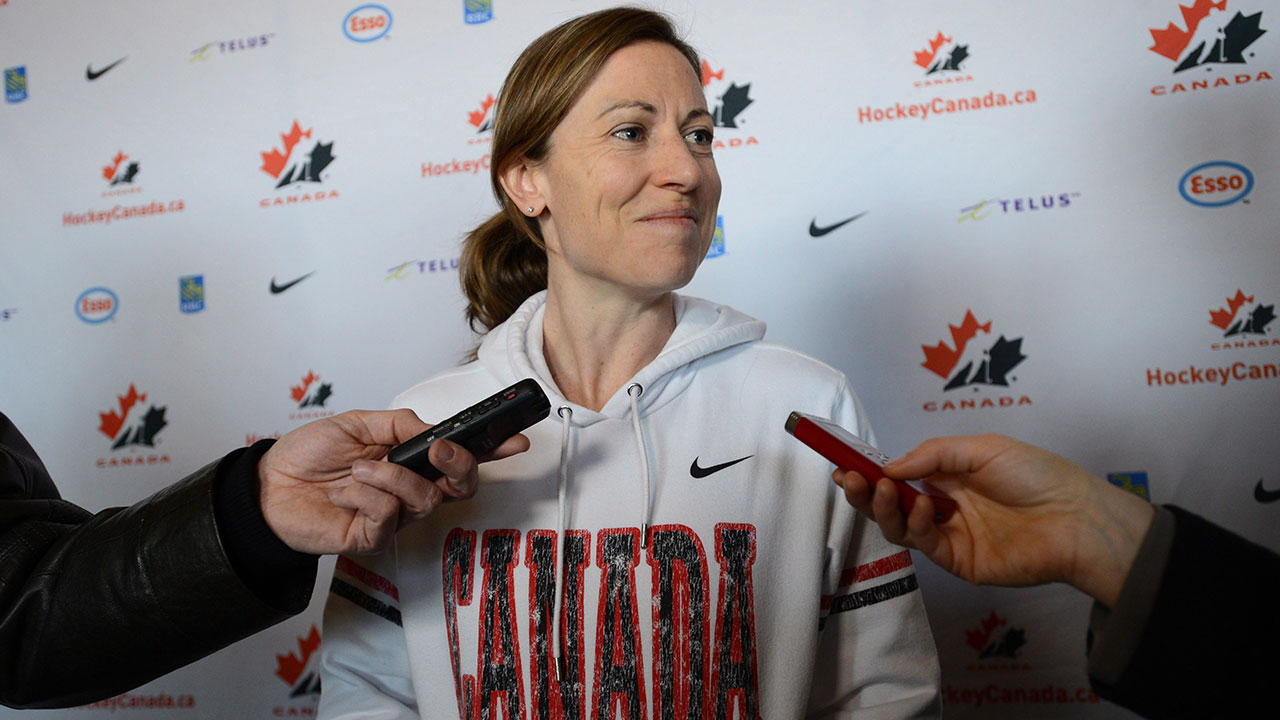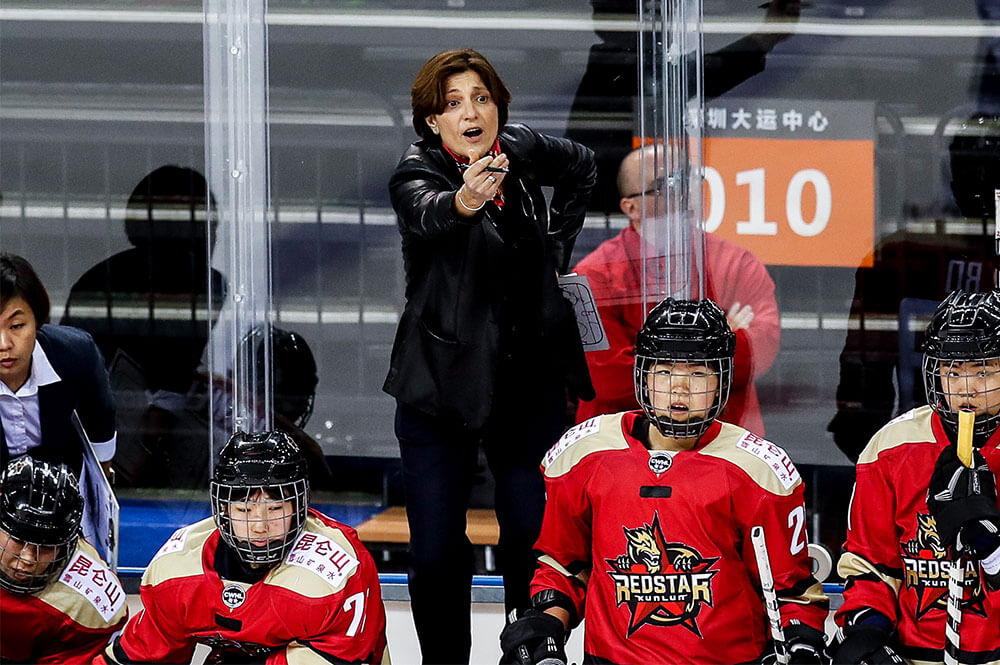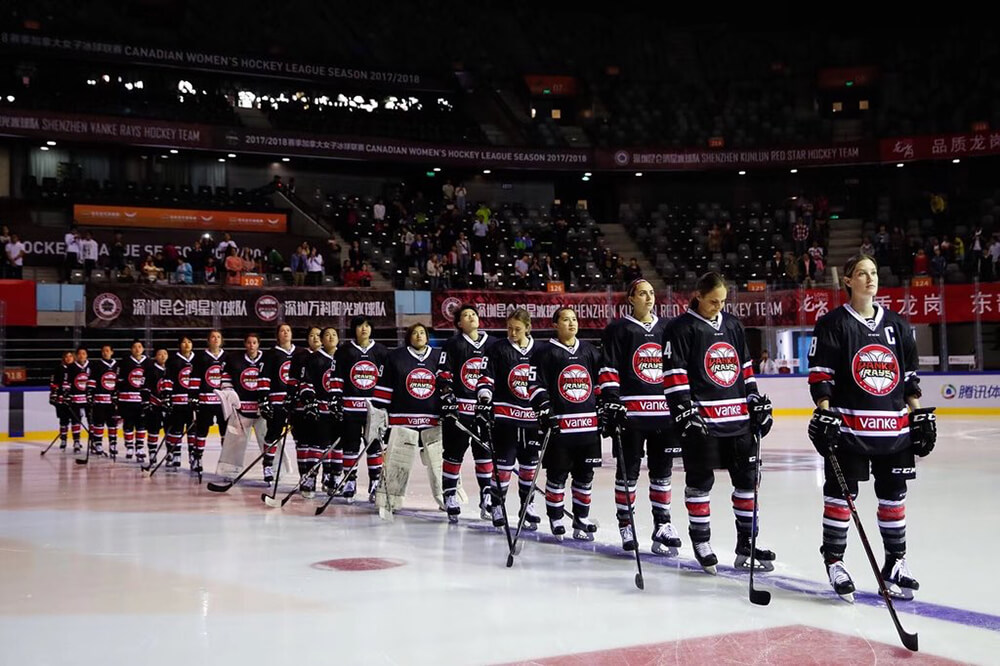“It’s crazy to be like ‘OK we’ll break it down, we’ll go back to the beginning.’ But that’s what we’ve had to do with some of these players.”
Footwork, too, has been a work in progress, particularly with the defencemen. “Before it was, ‘OK, it’s hockey, we’re gonna go play, we’re gonna shoot some pucks and pass and that’s gonna be it,’” Mercer says. “There’s little parts of the game that have slipped through the cracks for them, and for us it’s trying to help build those pieces up, those missing pieces.”
That includes how to train and eat and live like an elite athlete. California-born Rachel Llanes is the strength coach and nutritionist who doubles as a winger for the Red Star, and she spent many of her early days here convincing her Chinese teammates to drink water, stop eating fried food for breakfast and start lifting weights with a goal in mind. “They were really soft at the start of the year,” Llanes says. “Like, they couldn’t do 10 push-ups. It was ugly.” Her hope is to have all these players on their own strength programs in two years’ time, a goal she calls “a long shot right now.” Hey, what goal around these parts isn’t?
But what has shocked these North Americans and Finns, now just five months in, is how quickly some players are catching on. Berry, who didn’t have a slap shot, scored with one already this season. Mercer now sees Turbo shooting in stride and keeping her head up and scoring regularly in practice. “It’s actually crazy how much we’ve seen them improve,” Mercer says. “Now we have three Chinese players — Turbo and Summer [Mighui Kong] and Elsa [Xin He] — and they’re a forward line, and they’ve come so far. You actually feel confidence with them on the ice now, and it’s really special.”
[snippet id=4207345]
Through 21 games of the inaugural season, Turbo’s line has accounted for five goals. “We have the power and the skill to fight against the North Americans,” she says.
The best part, if you ask her, is that after 16 years of hockey, she’s now seeing the game like an elite player and feeling confident as a result. “Sometimes, for example, I don’t force pass, you can give myself some time to control,” she says. “Patience. Is because I learn the technique also. Shooting and little skills I learned from North Americans. Back-door rebounds, read the puck.
“The best part for us is before when we play for national team, we always lost. If you don’t win, you don’t have confidence. Now we win the game, our teammates and coach give us confidence. This is so big for us.”
That’s how you get a nation of 1.4 billion interested in hockey, too.
“We need to win every game,” Berry says. “We need to let China fans see we can win so they can love hockey, they can know how to play hockey. If we always losing, I think nobody want to watch us play.”


















